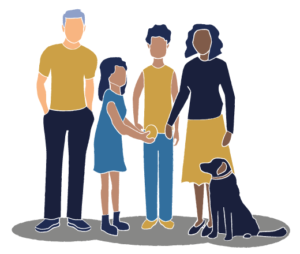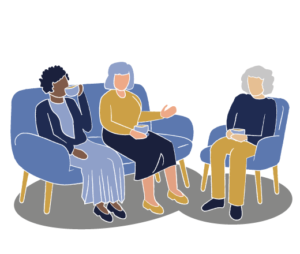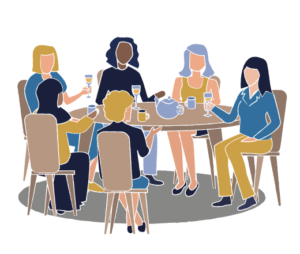 In my post of 12 April 2020 (How long is this sustainable for?) I promised a series of mini-blogs to highlight stories about companies that see the link between the sustainability of their business and that of the planet. I’m giving myself free rein here to look at anything from what big, grown-up companies and organisations are doing to get with the programme, to young, earnest start-ups with ground-breaking ideas – and all that comes in between. Happy reading!
In my post of 12 April 2020 (How long is this sustainable for?) I promised a series of mini-blogs to highlight stories about companies that see the link between the sustainability of their business and that of the planet. I’m giving myself free rein here to look at anything from what big, grown-up companies and organisations are doing to get with the programme, to young, earnest start-ups with ground-breaking ideas – and all that comes in between. Happy reading!
A sustainable story for today: Paper bags, plastic bricks
Pictures of sea birds entangled in the bands of a face mask last week reminded us that plastic is back on the agenda. Unlike some of the overarching sustainability themes such as global warming or unfair trade practices, the direct effects of throwing away plastic hit home with immediacy. We know we use plastic and we know that we throw it away. When we see items that look very much like the ones we have touched with our hands turning up in places they shouldn’t, it gives us a slap. Which is why, I think, the plastic bag revolution of the past couple of years has resonated with consumers more than, say, the need to change our driving habits, or to question the source of every item in our baskets. The problem is literally staring us in the face and so, quite hard to ignore.
Today’s story has plastic running all the way through it.
Privately owned tiny brick-maker, Lego, has announced it is to start replacing its single-use plastic bags with paper ones that will be recyclable. Unphased by the current pandemic, Lego is building on its long-running popularity as its play sets continue to provide ever more children (and adults) with a much-needed indoor occupation. Lego cites letters from children supporting the move away from plastic bags – on both environmental grounds and because they are apparently easier to open – as the reason behind the announcement.
Tinkering around the edges
Now, the cynical amongst you might see this as tinkering around the edges. Isn’t this a bit like Shell expecting applause for delivering diesel to the pumps in lorries that run on solar power? This is a company that does nothing but make small bits of plastic that have no practical purpose other than to provide entertainment. And, as any family will know, those elaborate sets with all their dinky little add-ons and clip-ons that make them so appealing to every miniaturist out there are always missing a piece or two when you pull them back out of the cupboard. Which inevitably means they must be turning up in places they shouldn’t be.
The virtuous circle
So, do we applaud Lego for taking the first step towards a sustainable future, or do we shun them? Well, the first thing to note is that this is a private company and therefore has no accountability to public shareholders. But it does have accountability to its customers – hence the letters from the children. I have talked about the virtuous circle before (Trust in Trees) – one that is fed by the need for public companies to score well on sustainability so as to appeal to those who want to be invested in the companies of the future. Just because in this case it is children, rather than investors, who are applying the pressure doesn’t make it any different.
An easy shot
This is presumably why Lego has also set a target for making its products from sustainable materials by 2030 (apparently sugar cane is playing a part in this – another winner for the children!). Yes, switching its plastic bags for paper ones is a quick and easy shot for Lego and one that doesn’t fix the enormous problem of all that plastic. But it is also a quick and easy shot to slam the company for historically using plastic in its business in the first place. Consumers can, of course, vote with their wallets, but they, just like shareholders, can also apply pressure on a company to make the sort of changes that are needed for a sustainable future. If Lego is serious about listening to ‘the kids’, it will do everything in its power to find alternative materials for its product and deliver on that 2030 target.
Brick-by-brick changes
At the core of many sustainable investment options is the aim to support companies that are embracing change away from harmful materials and practices (that and making money, obvs). It is unrealistic to expect all the necessary changes to come overnight, but we might dare to hope that a new world can be built – tiny brick by tiny brick.
16 September 2020 carole@talkingfinances.co.uk
All opinions are those of Carole Haswell and do not constitute financial advice
Talking Finances With Women
I’ve a feeling that there is going to be a whole lot of marketing aimed at women around sustainable investing. As ever, there will be a gulf between the promotions coming from on high and the position of non-investors on the ground with questions like: Is this for me, how does it work and why might I need it? This is where I think financial advisers, planners and commentators can all step up, but I also believe it will be stories like these that get us interested in the first place. If you are inspired to take this further, please see ‘A bit more understanding’ below.
A bit more understanding
These Sustainable Investment mini blogs are not about providing investment tips. The point is to flag to you the sort of projects that professionals who invest sustainably keep an eye on. Generally speaking, ordinary folk investing on their own behalf would not be encouraged to invest directly in companies, but to use funds made up of a number of different companies. This way, we can pool our resources and spread out our risk.
The professionals who manage these funds (imaginatively known as fund managers) have exams coming out of their ears and do tonnes of research into the companies they invest in so that you don’t have to. After all, you wouldn’t want to bet your house on a single company that is doing great things as its core business only to find out that it has a side hustle in selling pandas into slavery.
You can think of different kinds of funds like Russian dolls, starting with the ‘company’ at the centre:
- The company – an investment in a company could be shares that pay dividends and go up or down in value; or a bond where the company ‘borrows’ money for a set amount of time in return for a fixed amount of income
- A fund (aka collective investments such as a unit trust, OEIC or investment trust) – a fund manager chooses the companies they want in their fund. A sustainable investment fund manager would invest in companies that tick the right boxes on environmental, social and governance (ESG) matters
- Multi-manager fund – this is another layer of management that puts together a number of funds as a single fund. In a sustainable investment multi-manager fund, the funds chosen would be investing in companies that meet ESG principles
- Managed portfolio – a financial adviser or investment manager can put together a collection of funds to suit a particular level of risk and investment preferences (such as sustainable). Unlike the multi-manager funds, the client holds a number of funds, not just one – you would generally seek financial advice for this sort of investment. The manager would make changes to the portfolio (ie switch in or out of funds) either after consulting with the client (called ‘advised’) or at their discretion (called ‘discretionary’)
The funds and portfolios on offer within sustainable investing are growing. Advisers, planners and other financial professionals will be learning about the options available as we go along. If you are new to investing, a good place to start is https://www.moneysavingexpert.com/savings/investment-beginners/ or https://www.moneyadviceservice.org.uk/en/categories/how-to-invest-money. Here you will find helpful guidance and suggested websites where you can do your own investing. More information on the sustainable options is also provided.
Alternatively, please feel free to talk to us about your circumstances at Talking Finances.
Talking Finances is a trading name of Talking Finances Ltd. Talking Finances Ltd is an appointed representative of Beaufort Financial Planning Limited, Kingsgate, 62 High Street, Redhill, Surrey, RH1 1SH, which is authorised and regulated by the Financial Conduct Authority, FCA Registration No. 583233
 Carole has a 1980s’ classic on the brain and recognises that, with the children back at school, there are lessons to be learnt about accepting risk in our lives – whether that comes from the playground or the stock markets
Carole has a 1980s’ classic on the brain and recognises that, with the children back at school, there are lessons to be learnt about accepting risk in our lives – whether that comes from the playground or the stock markets Carole notes that companies are under pressure to be ‘good’ and nothing talks quite like market forces – but why are sustainable investments attracting women? Maybe investing for ‘good’ appeals to women because it finally gives them a reason to show some interest
Carole notes that companies are under pressure to be ‘good’ and nothing talks quite like market forces – but why are sustainable investments attracting women? Maybe investing for ‘good’ appeals to women because it finally gives them a reason to show some interest 
 Carole gets off the couch to take her thoughts about the value of financial advice out for a run, and concludes that women need to feel more comfortable (back to the couch, then)
Carole gets off the couch to take her thoughts about the value of financial advice out for a run, and concludes that women need to feel more comfortable (back to the couch, then) 